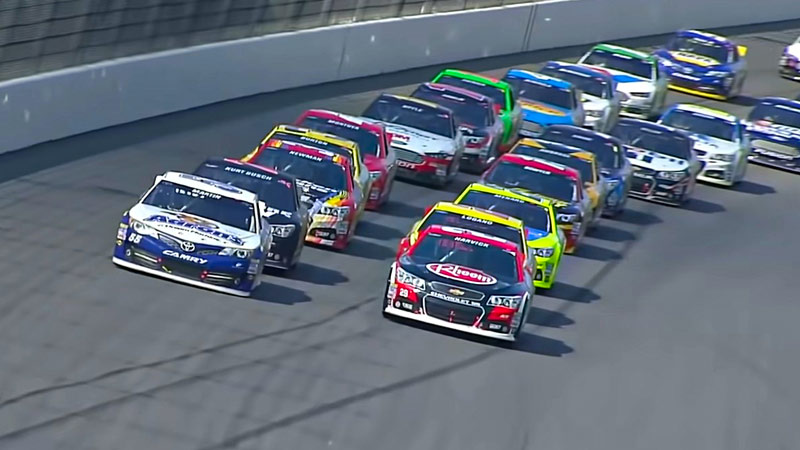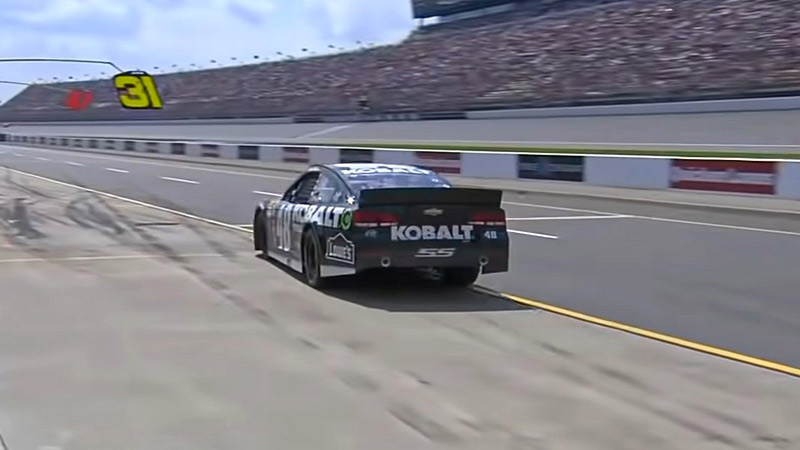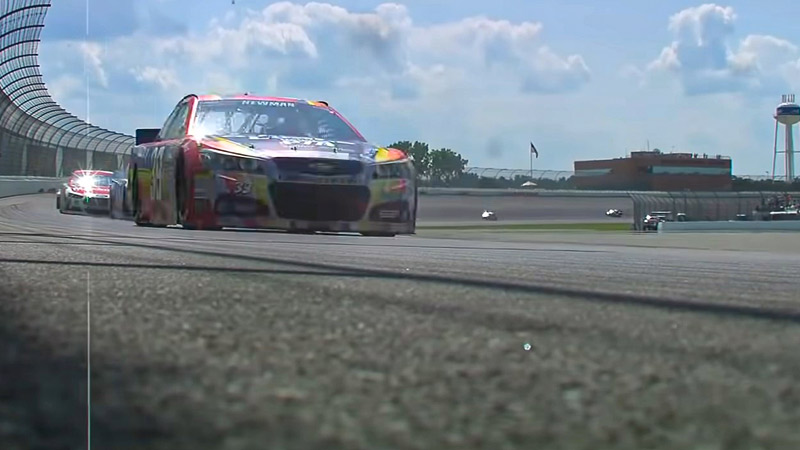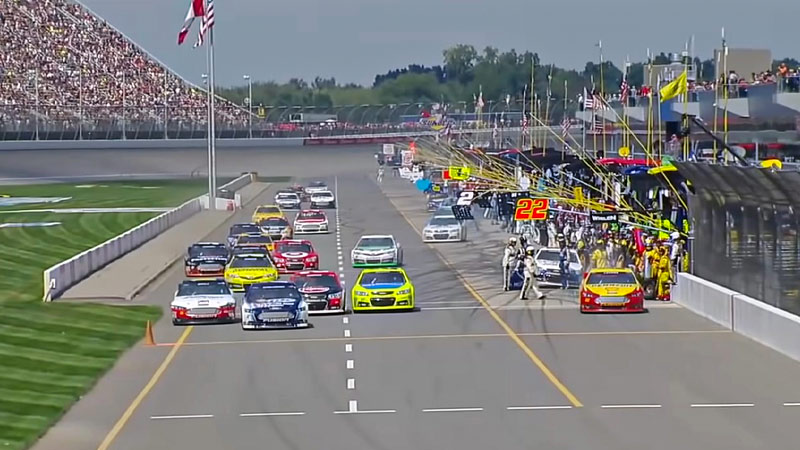Car racing is a thrilling and high-speed sport that captivates fans worldwide. It’s not just about the drivers and the cars; the sport also involves a strategic element that adds another layer of excitement and complexity.
One of the key concepts that plays a crucial role in various forms of car racing is “stages.”
Stages are more than just segments of a race; they are the building blocks that shape the entire event. They introduce strategy, excitement, and opportunities for drivers and teams to showcase their skills.
Whether you’re a die-hard racing fan or just curious about the world of motorsports, understanding what stages mean in car racing is essential.
In this blog post, we will unravel the concept of stages in car racing. We’ll explore their role in different racing disciplines, how they impact race strategies, and why they matter to both drivers and fans.
Buckle up as we delve into the world of stages in car racing and discover the tactics and drama that unfold on the track.
What Do Stages Mean in Car Racing?
In the realm of professional car racing, the concept of “stages” has been introduced as a significant and strategic element to enhance the competitive and entertainment aspects of the sport.
Stages are not exclusive to any single racing discipline but have been notably incorporated into various motorsport categories, including NASCAR and some forms of endurance racing.
Race stages in car racing represent predefined portions or segments within a race.
Instead of having a single continuous race from start to finish, the event is divided into distinct sections, each with its own unique set of rules, strategies, and points systems.
These stages are created to inject excitement, unpredictability, and additional strategy into the race, benefitting both drivers and fans.
Stages create moments of heightened excitement during a race. Drivers often push harder during the closing laps of a stage to secure stage points, which can lead to thrilling battles on the track.
The Basics of Car Racing Stages

Car racing stages are a fundamental component of many racing disciplines, adding excitement and strategic depth to the sport.
Whether you’re a seasoned motorsport enthusiast or a newcomer, understanding the basics of car racing stages is essential to appreciate the dynamics of the races.
Here’s a breakdown of the key elements:
1. Segmentation of the Race
Car racing stages involve dividing a race into distinct segments. The number and length of these stages can vary depending on the racing series and event.
The stages are typically named Stage 1, Stage 2, and the Final Stage, although other designations may be used in different series.
2. Points Allocation
One of the primary purposes of car racing stages is to award points to drivers. Points are given to the top finishers in each stage.
The number of points awarded varies but is usually highest for the stage winner and decreases as you move down the order. These stage points are added to a driver’s overall points tally, impacting their championship position.
3. Stage Objectives
Each stage has its unique objectives. These can include earning stage points, securing a good starting position for the next stage or the final stage, or simply improving the track position.
These objectives incentivize drivers to compete aggressively during each stage.
4. Pit Strategies
Stages add complexity to pit strategies. Teams must decide when to pit for fuel, tires, and adjustments, taking into account the race’s segmentation. Choosing the right moment to pit can be critical to a driver’s success.
5. Stopping the Clock
In some racing series, stages have a predetermined number of laps. The clock stops during caution periods or when a race is temporarily halted.
This ensures that each stage has a similar duration and maintains a level of competitiveness.
6. Accumulating Points
The points earned in each stage contribute to a driver’s overall performance in the race.
For instance, a driver who wins both Stage 1 and Stage 2 might accumulate a significant points advantage over competitors, even if they don’t win the race itself.
7. Overall Race Winner
The final stage, often called the “Final Stage” or “Stage 3,” determines the race winner. While stage points are crucial, winning the final stage usually carries the most prestige and the highest number of championship points.
The cumulative effect of stage points, however, can still influence a driver’s overall race position.
8. Strategic Decisions
Drivers and teams must make strategic decisions based on the stage format. These decisions may include when to push hard for a stage win, when to conserve resources, and when to pit for the best track position.
9. Fan Engagement
Stages make racing more engaging for fans. Viewers can follow the progress of their favorite drivers and anticipate exciting battles for stage wins.
The segmentation of the race also provides natural opportunities for commercial breaks, which support television broadcasts.
Car racing stages are a crucial element in modern motorsport, shaping the way races are structured, creating moments of intense competition, and influencing a driver’s championship standing.
Whether you’re attending a race in person or watching on television, understanding the basics of car racing stages enhances your appreciation of the strategy and excitement that unfolds on the track.
Scoring and Points System in Car Racing Stages

The scoring and points system in car racing stages plays a pivotal role in determining a driver’s performance, their standing in the race, and their overall championship position.
The system varies between different racing series, but here are the fundamental principles that apply to many motorsport disciplines, particularly in NASCAR as an example:
Points Distribution
Points are awarded to drivers based on their performance in each stage. The driver who finishes first in a stage typically receives the most points, while lower positions receive fewer points.
The specific point values vary between different racing series but usually follow a decreasing scale.
Stage Winner
The driver who wins a stage is awarded the highest number of points available for that stage.
This is a significant incentive, as these points can be crucial in determining a driver’s race and championship position. The stage winner often gets a bonus point or more for winning the stage.
Top Finishers
Points are awarded to the top finishers in each stage, typically down to a certain position. For example, in NASCAR, points are awarded to the top 10 or more finishers, with the stage winner receiving the highest points.
Stage Completion
Even drivers who do not finish in the top positions of a stage often receive a small number of points for completing the stage. This rewards consistency and participation.
Cumulative Points
The points earned in each stage are cumulative throughout the race. For instance, if a driver earns points in Stage 1 and Stage 2, these are added together to determine their total stage points for the race.
Impact on Race Outcome
The points awarded in stages can have a significant impact on a driver’s overall race position.
Drivers who perform well in multiple stages can find themselves in an advantageous position for the final stage and, ultimately, the race win.
Championship Points
In many racing series, including NASCAR, the points earned in stages contribute to a driver’s overall championship standings.
This means that not only race victories but also consistent performance in stages can be crucial for a driver’s season-long championship aspirations.
Strategy and Timing
Teams and drivers must strategically decide when to push hard for stage points and when to conserve resources for the final stage. These decisions can be influenced by factors like track position, tire wear, and fuel strategy.
Tiebreakers
In the event of tie-in points between two or more drivers at the end of a race or in the championship standings, tiebreakers are used to determine the higher-ranking driver.
These tiebreakers may consider factors like the number of stage wins, race wins, or overall consistency.
Incentive for Competitive Racing
The points system in car racing stages is designed to encourage competitive racing. By awarding points not just for the race win but also for stage performance, drivers are motivated to give their best throughout the entire race.
It’s important to note that the specific points distribution, tiebreakers, and other details can vary significantly between different racing series.
Therefore, fans and participants need to familiarize themselves with the points system specific to the series they are following or participating in.
How Do Stages Work in NASCAR?
Stages in NASCAR are a distinctive feature that has added excitement, strategy, and entertainment to the races. Here’s how stages work in NASCAR:
Division of the Race

A typical NASCAR race, especially in the Cup Series, is divided into three stages: Stage 1, Stage 2, and the Final Stage.
The length of each stage and the number of laps may vary depending on the race and track, but they are pre-determined and announced before the race begins.
Points Allocation
One of the key elements of stages in NASCAR is the allocation of points. Points are awarded to the top finishers in each stage. The winner of a stage receives the most points, and the points decrease incrementally for lower positions.
Stage Winner
The driver who crosses the finish line first at the end of a stage is considered the stage winner and is rewarded with the most points for that stage. This adds extra motivation for drivers to perform well in each stage.
Points for Top Finishers
Points are also given to drivers who finish in the top positions of a stage, often down to the top 10 or more finishers. These points contribute to a driver’s total for the race.
Cumulative Points
The points earned in each stage are cumulative throughout the race. So, if a driver earns points in Stage 1 and Stage 2, those points are added together to determine their total stage points for the race.
Incentives for Consistency
Even drivers who don’t win a stage can earn points for completing the stage, which promotes consistency and participation. These points can be valuable in the overall race and championship context.
Pit Strategies
Stages add a strategic element to pit stops. Teams must decide when to pit for fuel, tires, and adjustments based on their stage objectives. Pit decisions can significantly influence a driver’s overall race position.
Impact on Race Outcome
The points accumulated in the stages can have a substantial impact on a driver’s overall race position. Strong stage performance can put a driver in a favorable position for the final stage and the race win.
Championship Points
Importantly, the points earned in stages contribute to a driver’s overall championship standings.
This means that not only race wins but also consistent performance in stages can be pivotal in a driver’s quest for the season-long championship.
Excitement and Fan Engagement
Stages create natural moments of excitement during a race. Drivers often push harder toward the end of a stage to secure stage points, leading to intense on-track battles.
This adds to the excitement for both fans at the track and those watching on television.
Stages in NASCAR break down the race into manageable portions, award points to drivers based on their performance in each stage, and add strategic complexity to pit decisions.
NASCAR Stage Rules

Now, you must want NASCAR stages explained. To learn about the stage meaning in car racing, you should know the NASCAR race stages explained clearly.
NASCAR’s stage rules are specific regulations governing the structure and scoring of stages in NASCAR races, which were introduced to enhance competition, strategy, and fan engagement.
These rules provide a framework for how stages work within the sport. Here are the key NASCAR stage rules:
Stage Length and Breakdown
NASCAR announces the total race distance and divides it into stages, typically Stage 1, Stage 2, and the Final Stage.
The length of each stage, measured in laps or miles, varies depending on the track and race event. The total race distance remains constant.
Points Allocation
Points are awarded at the end of each stage to the top-performing drivers. The driver who finishes first in a stage receives the highest number of stage points, with lower positions receiving fewer points.
For example, the stage winner often receives 10-10-10 points for each of the three stages, while subsequent positions receive decreasing points.
Stage Winner
The driver who crosses the finish line first at the conclusion of a stage is considered the stage winner. This driver receives the most stage points for that stage and is recognized for their achievement.
Stage wins can have a significant impact on a driver’s race and championship position.
Points for Top Finishers
Points are awarded to drivers who finish in the top positions of a stage. Typically, points are distributed down to at least the top 10 finishers, though the exact number may vary depending on the series and race.
Stage Points Count
The points earned in each stage are cumulative and count toward a driver’s total for the race. So, if a driver earns stage points in Stage 1 and Stage 2, these points are added together to determine their total stage points for the race.
Tiebreakers
In the event of a points tie between drivers at the end of a race, NASCAR often uses tiebreakers to determine the higher-ranking driver.
These tiebreakers may include factors such as the number of stage wins, race wins, or overall consistency.
Pit Strategies
NASCAR stage rules introduce strategic complexity to pit decisions. Teams must decide when to pit for fuel, tires, and adjustments, considering their stage objectives.
Pit decisions can significantly influence a driver’s overall race position.
Stage Caution
At the conclusion of a stage, a caution period may be initiated. This allows drivers to pit, make adjustments, and prepare for the next stage.
Notably, drivers who finish in the top positions of the previous stage may have the opportunity to choose their pit stall location, potentially gaining an advantage.
Championship Points
The points earned in stages contribute to a driver’s overall championship standings. This means that not only race wins but also consistent performance in stages can be pivotal in a driver’s season-long championship quest.
These NASCAR stage rules have become integral to the sport, providing a structured framework for how races are conducted and scored.
FAQs
What do the stages mean in NASCAR?
In NASCAR, the race is divided into segments called “stages.” These stages are predetermined portions of the race where drivers compete for points, which are awarded to the top finishers.
Stages were introduced to add excitement and strategy to the races.
What are the stages in NASCAR?
Stages in NASCAR are designated parts of a race, typically divided into three segments.
They serve as a way to break up the race into smaller, competitive portions, allowing drivers and teams to strategize on when to pit, when to push hard, and when to save energy.
What is the stage 1 NASCAR?
Stage 1 in NASCAR refers to the first segment of a race, typically comprising a specific number of laps.
Drivers aim to finish as high as possible in this stage to earn valuable stage points. These points can affect their overall position in the race and in the season standings.
How many Stages are in the NASCAR Race?
A standard NASCAR Cup Series race is divided into three stages: Stage 1, Stage 2, and the Final Stage. Each stage has its own set of points awarded to the top-performing drivers.
The Final Stage often determines the race winner, while the accumulated stage points can significantly impact a driver’s championship standing.
Wrapping Up
In the world of car racing, stages have become a defining feature, transforming the way we experience and engage with this thrilling sport.
These segmented portions of races have reinvigorated competition, rewarded consistency, and added layers of complexity to pit strategies.
The introduction of stages has not only amplified the excitement on the track but has also significantly influenced a driver’s quest for race wins and championship titles.
As we conclude this exploration of what stages mean in car racing, it’s evident that they have breathed new life into a sport that has always thrived on speed, skill, and strategy.
Stages have become more than just race divisions; they are a testament to the ever-evolving nature of motorsport, ensuring that fans and drivers alike remain captivated by the dynamic and competitive world of car racing.
So, the next time you tune in to watch a race, pay close attention to the stages, for they hold the key to understanding the modern face of car racing.







